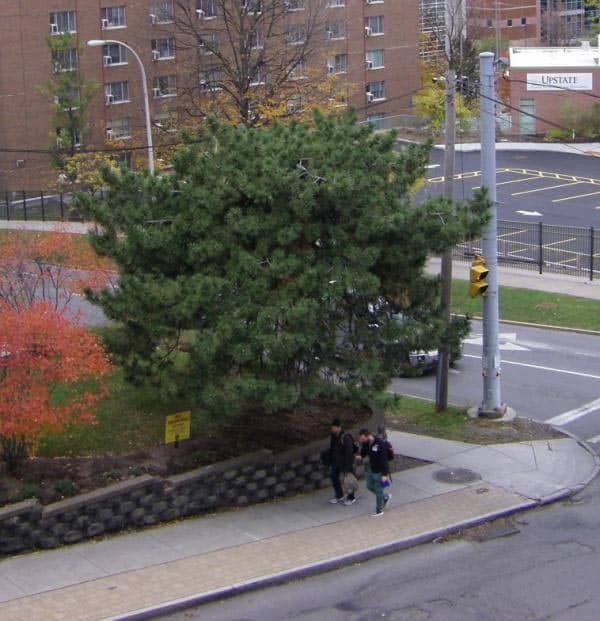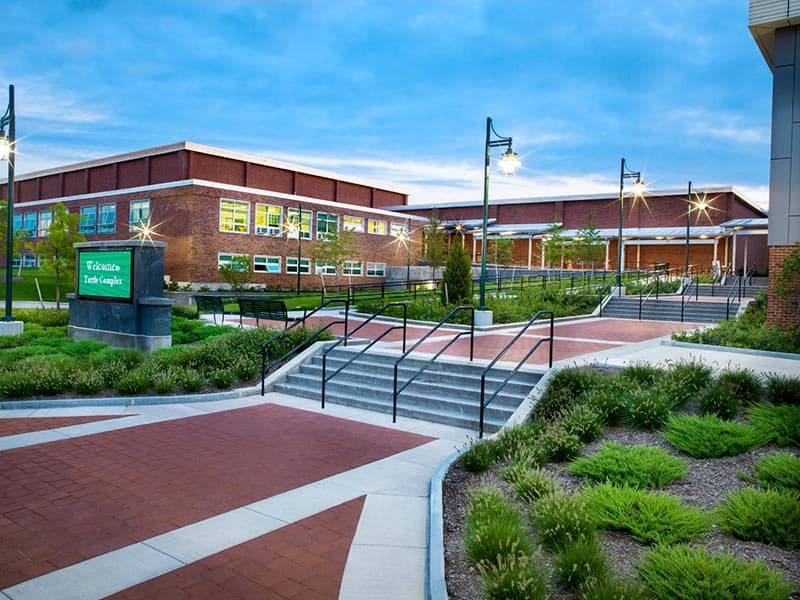The Evergreen on Top of the Hill
By James Palumbo | Monday, April 19, 2021
If you’ve lived in the city of Syracuse for any length of time, you’ve probably found yourself at the intersection of East Adams Street and Irving Avenue at one time or another. While waiting in traffic or at the crosswalk, perhaps you’ve noticed a squat tree with thickly lined bark and a vast, windswept canopy of dark green pine needle clusters. This mature tree is an admirable example of the Austrian Pine (Pinus nigra) in its natural form.
Austrian pines are commonly utilized in Central New York as landscape buffers and roadside plantings. However, they are often unsuccessful because of a combination of poor soil drainage and road salt infiltration.
Some Syracusans may recall that years ago Austrian pines were not an uncommon sight along Irving Avenue. The pine “on top of the hill,” however, is the last remaining testament to this recollection. Why has this particular evergreen thrived for years in such a harsh roadside environment when all others have failed to do?
This tree’s success is most likely because of the microclimate it dwells within. The blustering valley winds of East Adams Street mimic the mountain atmosphere of the Austrian Alps and shape the tree the same way the winds of its native environment would. East Adams and Irving meet at a high point in the city, thus providing a vantage point reminiscent of the tree’s Alpine home.
This evergreen’s situation is thought to be so unique that students and faculty at SUNY College of Environmental Science & Forestry used to visit the site during Urban Soils classes to observe its environmental setting. The well-draining, gravelly soils that exist immediately around the tree’s base are believed to be a main factor in its survival at such a harsh roadside location. This likely gave the tree an advantage over the other Austrian pines that once stood along Irving Avenue. Simply put, well-draining soil and frequent precipitation are contributing factors to this success story. Each spring, the rain helps flush the road salt from the raised and isolated soil area around the plant’s root system.
Protecting its roots
Though this tree remains unthreatened by its natural environment, it is worth noting that it has needed protection from the blade of a bulldozer during the past few decades of development. During the design and construction planning of SUNY Upstate Medical University’s East Wing Addition and again during the vertical expansion of Golisano Children’s Hospital, the tree’s potential removal was debated, as it would be convenient for construction laydown and staging. Fortunately, SUNY Upstate and its design consultants felt strongly enough about protecting this cherished element of the street corner’s landscape and deliberately worked construction plans around its drip line to ensure the tree’s safety.
Well protected in its microclimate, this tree will stand strong for years to come. Next time you find yourself at the intersection of East Adams Street and Irving Avenue, take a look at the Austrian pine, a marvelous specimen and long-time witness of one of the city’s busiest intersections.

Well protected in its microclimate, this tree will stand strong for years to come.



